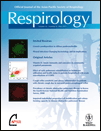The value of the CRB65 score to predict mortality in exacerbations of COPD requiring hospital admission
ABSTRACT
Background and Objective: The CRB65 score, a risk stratification method validated for use in community-acquired pneumonia, has recently been shown to have utility in acute exacerbations of COPD (AECOPD). The objective of this study was to independently validate the CRB65 score as a predictor of mortality in patients who required hospital admission with AECOPD.
Methods: The medical records of patients admitted to Wellington Hospital with AECOPD during a 12-month period from June 2006 were reviewed. Logistic regression was used to determine the strength of the association between the CRB65 score and death at three measurement times: in-hospital, 30 days and 12 months.
Results: Complete data were available in 133/174 patient admissions. In-hospital and 30-day mortality increased progressively with increasing CRB65 score and was markedly higher in the CRB 3–4 group (3%, 5%, 29%, and 4%, 9%, 43% for CRB65 scores 0–1, 2, 3–4 for in-hospital and 30-day mortality, respectively). Differences in 1-year mortality were less apparent (24%, 25%, 57% for CRB65 scores 0–1, 2, 3–4, respectively). The CRB65 score demonstrated a modest value for predicting in-hospital and 30-day mortality with a c statistic of 0.68 at both time points.
Conclusions: The CRB65 score shows similar characteristics for predicting short-term mortality in AECOPD as its use in community-acquired pneumonia. We recommend its use in clinical practice, particularly in patients with a score ≥3, which is associated with a high risk of early mortality, and need for intensive hospital management.




